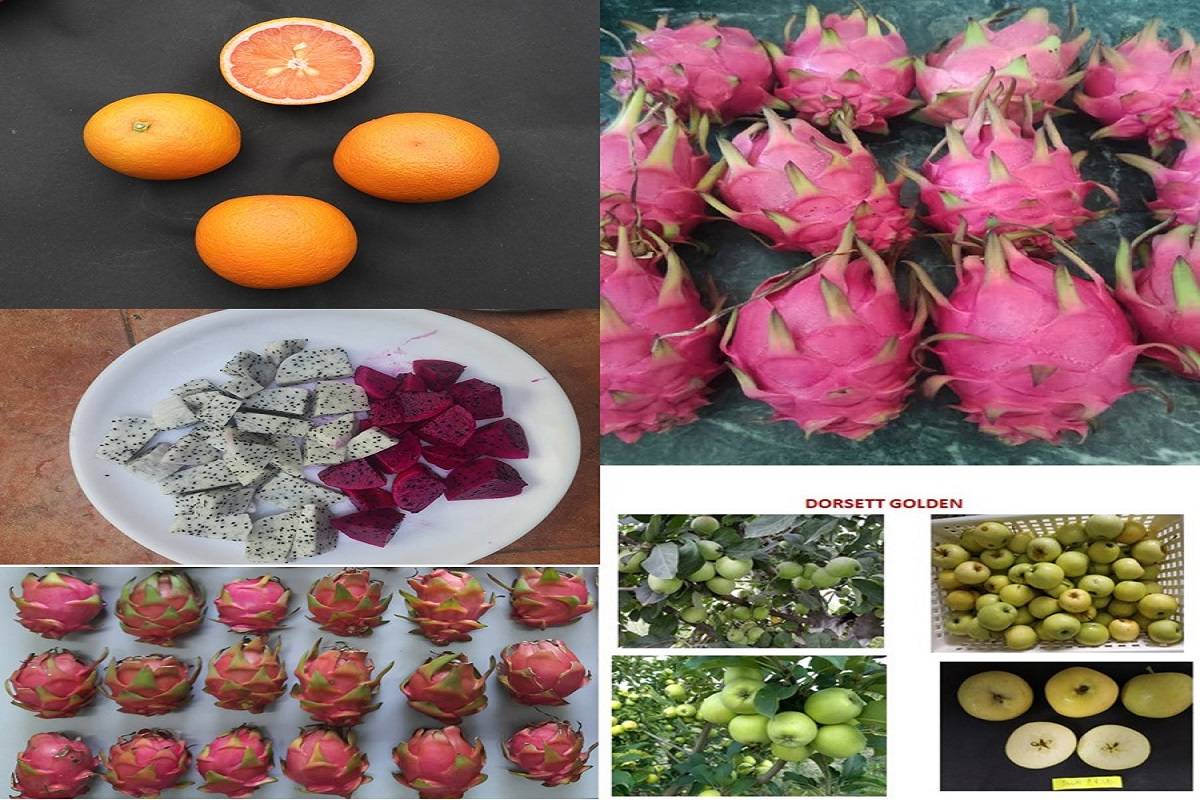
After more than five years of assessment and study, the Punjab Agricultural University (PAU) has certified and recommended two types of dragon fruit fit for production in the state, as part of a significant push toward agricultural diversification.
Punjab Agricultural University (PAU) has developed and endorsed 18 new horticulture crop types for widespread cultivation in the province. These include the citrus (sweet orange) varieties Vaniglia Sanguigno, Red Dragon 1, White Dragon 1, Dorsett Golden and Anna, Apple, PKH 11, Cucumber, Punjab Sarda, Muskmelon, Punjab Jamuni, and Punjab. Punjab Vegetable Guar I of cluster bean, Punjab Tarwanga I of tarwanga, Punjab Potato 101 and Punjab Potato 102 of potato, Punjab Himmat of brinjal, Punjab Lalima of okra, Punjab Bahar Guldaudi 1 and Punjab Bahar Guldaudi 2 of flower crops, and Punjab Bahar Guldaudi 1 and Punjab Bahar Guldaudi 2 of vegetable crops are examples of Punjab varieties.
Vice-Chancellor of PAU Dr. Satbir Singh Gosal told media that new varieties, comprising of five fruit crops, eleven vegetable crops, and two flower crops, will boost the growth of horticulture crops, paving the path for agricultural diversification and raise the income of farmers in the State.
The cultivars received approval during the State Varietal Approval Committee meeting, which was presided over by Shailender Kaur, Director of Horticulture for Punjab. Dr. Ashok Kumar, the director of extension education and Dr. AS Dhatt, the director of research, both said that the clearance had been granted following a thorough examination of the key traits of each variety.
The average production of Vaniglia Sanguigno, which has a dry irrigated zone, is 47 kg/tree.
In Punjab, Red Dragon 1 and White Dragon 1 produce fruit from July to November. After the fourth year of planting, their average output is 8.35 kg/pillar and 8.75 kg/pillar, respectively.
The apple types Dorsett Golden and Anna have minimal chilling requirements and mature quickly. Their respective average yields per plant are 30 kg and 32 kg.
The first parthenocarpic gynoecious cucumber hybrid that can only be grown in poly/net houses is PKH 11. For the crops seeded in September and January, the overall yield is 320 q/acre and 370 q/acre, respectively.
Punjab Sarda is ideal for long-distance shipping because of its excellent hardness and long shelf life. 56.0 q/acre yield is the average fruit yield.
A tropical cultivar called Punjab Jamuni is available for harvesting 92 days after seeding. It produces 218 q/acre of roots on average.
A tropical cultivar called Punjab Roshni is ready for harvest 96 days after it is sown. It produces 207 q/acre of roots on average.
The typical yield of green leaves and seeds for Punjab Khushboo is 184 q/acre and 3.16 q/acre, respectively.
Early-ripening Punjab Vegetable Guar 1 is ready for the first harvest 51 days after seeding. It yields 39 q/acre of green pods on average.
The leaves of the Punjab Tarwanga are green, and the vines have medium, intermodally long lengths. It produces 78 q/acre in the spring.
A versatile table potato with early bulking potential is Punjab Potato 101. The average production per acre of tubers is 178 q.
A table-purpose potato cultivar called Punjab Potato 102 yields 184 q/acre on average in tubers.
In brinjal, the Punjab Himmat variety is a member of the long fruit family. In typical soil conditions, it produces 242 q/acre. With a potential output of 204 q/acre on average, it may also be cultivated in salt-affected locations.
Punjab Lalima has a high anthocyanin and iodine content and is resistant to the yellow vein mosaic virus illness. 50 q/acre is the average marketable yield.
Punjab Bahar Guldaudi 1 and Punjab Bahar Guldaudi 2 have average yields of 2.294 kg/m2 and 1.668 kg/m2, respectively, making them appropriate for the production of loose flowers.

















